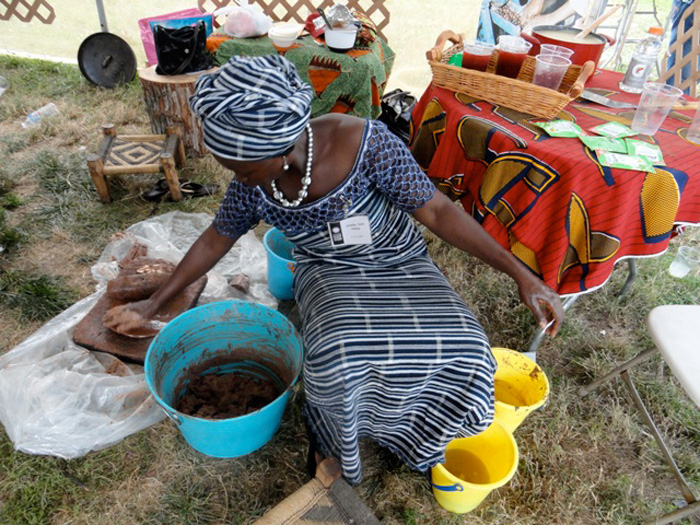Blisters for Butter: Reflecting on the Smithsonian Folklife Festival

Before my volunteer experience at the Smithsonian Folklife Festival, I had reservations regarding the effectiveness of the event. When the Festival was described to me, I immediately thought of early 20th century World’s Fairs and their displays of indigenous peoples, which typically exploited minority groups for the amusement and astonishment of the American public.
Thoughts of “Exotic Others” and “Noble Savages” reverberated in my mind as I apprehensively entered the Peace Corps area on July 4, 2011 and found my station for the day, the Shea Butter tent. At that point, as I began to remove the blue tarps from the tables and shake the water from the foldable chairs, I had no idea how my assumptions would be quickly disproven by the countless visitors to our tent, and that I would earn the “best” blisters of my life!!
As the Ghanaian women arrived at our tent, I had an immediate connection with the three of them. As a doctoral student at the University of Florida, I have traveled to Ghana for the past two summers to conduct research on Ghana’s contemporary fashion and have grown to love Ghana’s diverse peoples and cultures. The women welcomed me into their group and happily passed their oversized mortar and pestle to me (which isn’t surprising, considering how DIFFICULT pounding shea nuts can be).
We worked as a team; Gladys Sala Petey and I would switch between pounding shea nuts, and the other women would work on refining various consistencies of the shea butter. As the tent began to fill with people, I became an unofficial spokesperson for the women, explaining the process of making shea butter and soliciting help from our visitors, who were often happy to oblige.

Contrary to my expectations, I quickly realized that the visitors to our tent were actively learning about the creation of shea butter. As I described the process to a large group of visitors, I watched one mother turn to her husband and children to describe, almost verbatim, the various stages for producing shea butter. Concurrently, several visitors who assisted pounding shea nuts quietly reflected how they were reminded of their own past experiences in India and Brazil, where they had utilized a similar process for hulling rice.
By the end of the day, I was simply amazed at how much active learning had occurred at our booth. Not only did visitors leave us with a better understanding of the process for creating shea butter, but the production of shea butter had been humanized. Shea butter was no longer simply a product on the shelves of supermarkets, an exotic additive to lotions and shampoos; it was now connected to a group of women, to whom all of the visitors could relate. When I finally left for the day, as I felt the blisters covering my fingers, I couldn’t help but smile. I knew the blisters would ultimately disappear, but the experience and the connections I made will last a lifetime.
Christopher L. Richards is a Ph.D. student in African art history at the University of Florida. He is among 12 students who assisted Festival artists as part of the Summer Institute in Museum Anthropology (SIMA), a program offered by the Department of Anthropology at the Smithsonian's National Museum of Natural History.

